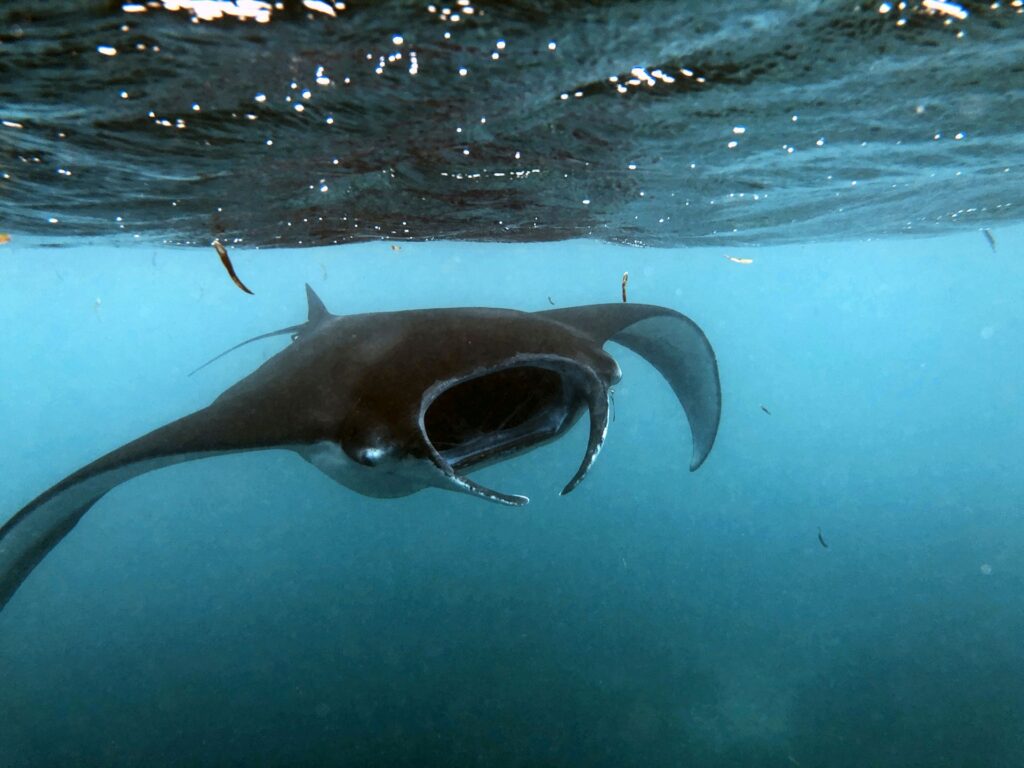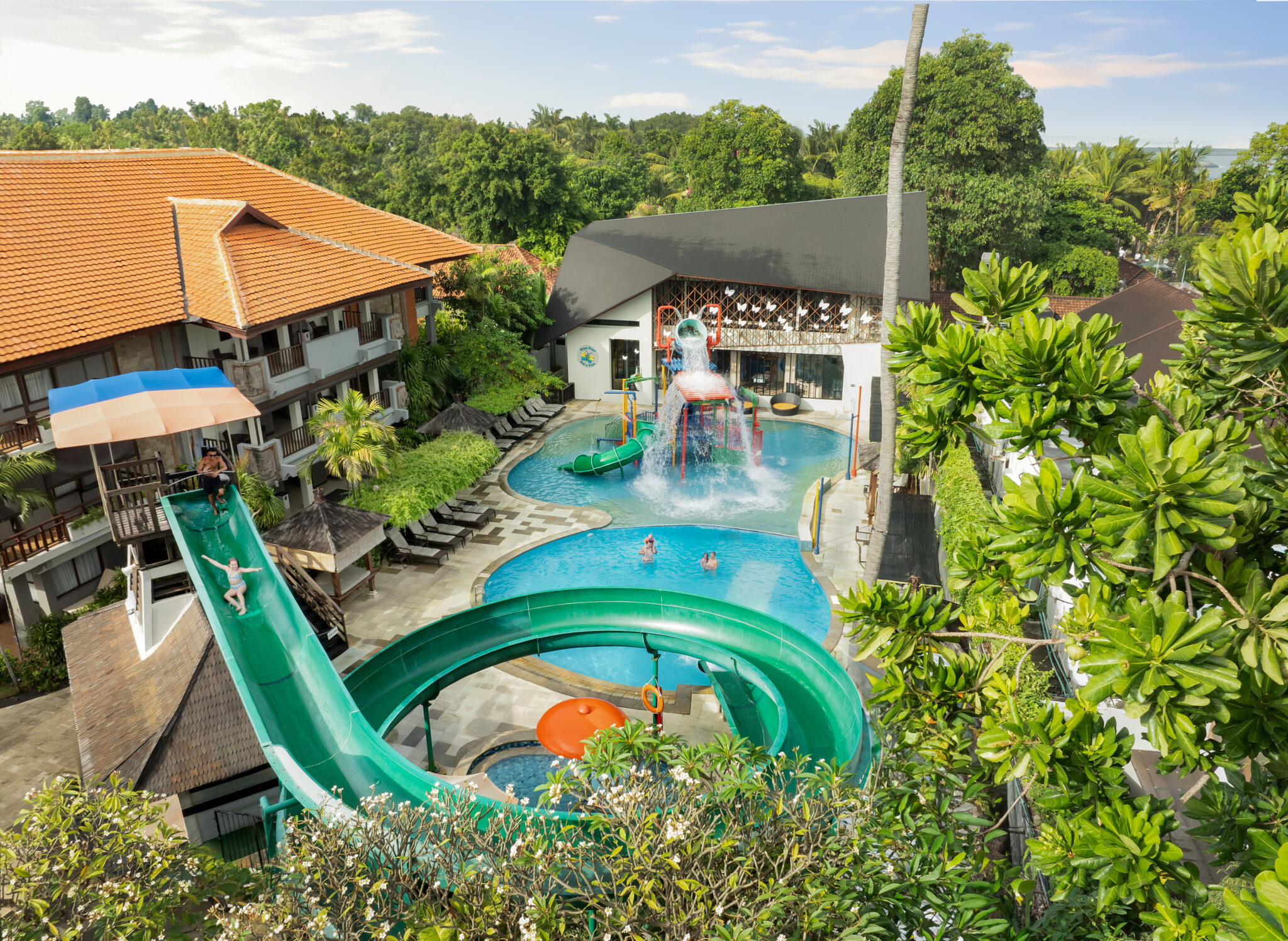Blue Safari Seychelles is now taking its unique signature snorkelling experience to a new level – all in the name of science. One of the most magical encounters for travellers to the outer islands is with Mantas and guests learn all about the key conservation project from the on-site marine biologist before heading out to swim with these enigmatic rays. The project prior to 2022 has relied on photo-ID but a major new development has been acoustically tagging 20 Mantas and taking genetic samples from 25 of the gliding giants, all to protect this fragile species.
After three years of planning and collaboration with partners from around the world, and two and a half years of fundraising, the project is coming to fruition. Its aims are:
- To investigate the spatial ecology of the reef Manta Rays around the Alphonse group of atolls, using the 68 underwater receivers situated around the outer reefs and inner lagoons which will detect the high-frequency pings emitted by the tags on the Mantas as they swim past.
- To look at how the Mantas are inhabiting the atolls, the acoustic data will be overlaid with tidal and weather data to look at the conditions that affect their movements.
- To look at what factors influence their movement patterns and residency times around the atolls at different stages of life in male and female Mantas; their primary critical habitats will be identified which will help influence local conservation management decisions.
- To track Mantas tagged on Alphonse as they show up on the receiver array at D’Arros, St Josephs, and some other northern Amirante islands such as Poivre. This will give definitive data on how often these Mantas travel around the Amirante chain and use different habitats, a mystery until now!
- To contribute genetic samples to an Indian Ocean-wide genetic study looking at connectivity throughout the region, again with significant international conservation implications for Mantas.
- Inspirational encounters with the world’s largest ray are one of the most compelling and unforgettable delights of joining Blue Safari Seychelles on the journey of a lifetime. Its conservation team is dedicated to offering guests a chance to not only swim with the incredible Mantas in the water but also give an immersive experience learning about how to identify them through the unique spot patterns on their bellies and observe how they feed using their iconic horn-shaped fins.

This most recent development sits within the national Seychelles Manta Ray Project (SMRP) which Blue Safari are a key partner of in collaboration with The Manta Trust, Save Our Seas Foundation, and other partners around the Seychelles. Dr Lauren Peel oversees the SMRP and expert tagger, Luke Gordon, who is head of Manta Trust Fiji, flew out to assist Blue Safari Seychelles with its exciting three weeks of fieldwork and train the team on the ground in tagging and sampling techniques. The acoustic tags are about the size of a cigar and sit outside the Manta; a tagging pole injects a skin anchor into the muscle tissue of the Manta and a strong thread connects that to the outside tag. Anyone swimming alongside the Alphonse Mantas for the next few months can spot the tags immediately as they have been painted with bright blue anti-foul paint. The genetic samples have been collected using the same pole but instead of inserting a tag, the tip extracts a tiny piece of tissue; in all 23 different Mantas have been sampled and Blue Safari Seychelles has taken care not to sample and tag the same Manta, to minimise stress.
The new Manta Acoustic Tagging project has been 100 percent funded by guest donations, without which it would not have been possible. The next download of data from the receivers will be in February when preliminary analysis will show which Mantas have stayed around and what they have been up to.
The project has a planned three-year timeline after which all the data will be fully analysed, reports and papers compiled, and increased conservation management put in place. The results of the project will be highly valuable for the protection of poorly studied Manta populations in other small island states where pressures on these creatures may be higher. Globally Manta Rays are facing significant threats; at least 15,000 Mobulid Rays are caught by the global tuna fishery alone every year as by-catch and a further 150,000 are killed for their gills which are used in Chinese traditional medicine. Both species are listed on the IUCN Redlist and on the CITES appendices but there is still a considerable illegal trade in their gills, as Mantas are incredibly slow to reproduce and their populations have decreased more than 30% in the last 25 years, the need to protect these remote, untouched populations has never been greater.








